Featured image credit: SpaceX
Liftoff Time | December 24, 2023 – 13:11:00 UTC | 5:11:00 PST |
|---|---|
Mission Name | SARah 2 & 3 |
Launch Provider | SpaceX |
Customer | Bundeswehr, the armed forces of the Federal Republic of Germany |
Rocket | Falcon 9 Block 5, booster B1075-8; 56.17-day turnaround |
Launch Location | Space Launch Complex 4E (SLC-4E), Vandenberg Space Force Base, California, USA |
Payload mass | 3,600 kg (~8,000 lb) |
Where did the satellites go? | A circular 500 km (~310 mi) low-Earth orbit (LEO) at 88.2 degrees inclination |
Did they attempt to recover the first stage? | Yes |
Where did the first stage land? | Landing Zone 4 (LZ-4), at ~400 m (~1,300 ft) from the launch pad |
Did they be attempt to recover the fairings? | The fairing halves are expected to be recovered from the water ~493 km (~306 mi) by GO Beyond |
Were these fairings new? | Unknown, but they were likely flight-proven |
This was the: | – 284th Falcon 9 launch – 216th Falcon 9 flight with a flight proven booster – 228th re-flight of a booster – 94th re-flight of a booster in 2023 – 256th booster landing – 182nd consecutive landing (a record) – 96th launch for SpaceX in 2023 – 61st SpaceX launch from SLC-4E – 212th orbital launch attempt of 2023 |
Where to watch | Official replay |
What’s All This Mean?
SpaceX successfully launched the SARah 2 and SARah 3 radar reconnaissance satellites on its Falcon 9 Block 5 rocket for the Bundeswehr, or the armed forces of the Federal Republic of Germany. Liftoff happened from Space Launch Complex 4 East, at the Vandenberg Space Force base, in California. The Falcon 9 successfully placed these satellites into a circular 500 km (~310 mi) low-Earth orbit. Afterward, the vehicle’s booster returned to its launch site and land on LZ-4.
How Did It Go?
Upon ignition of the Falcon 9’s first stage engines, their thrust impelled the rocket skyward, rising in an accelerating trajectory. The launch vehicle reached all flight-related milestones nominally through booster landing. At this point, the company ended its webcast at the customer’s request. Successful payload deployment saw its public confirmation via a post on X. Additionally, it is worth mentioning that the Merlin Vacuum engine on the second stage featured the short version of the nozzle.
What Are SARah 2 & 3?
The SARah 2 & 3 satellites are passive radar reconnaissance satellites built by OHB System AG, and operated by the German armed forces, called Bundeswehr. The satellites will continue the replacement process of the aging SAR-Lupe constellation. As the name implies, it is a Synthetic Aperture Radar (SAR) constellation that the German government currently uses for reconnaissance.
SARah 2 and SARah 3 are two “reflector antenna” satellites, meaning they will consequently fly in formation with SARah 1 to increase the resolution of the constellation. The passengers on this mission feature radar payloads from Thales Alenia, while Northrop Grumman provided their navigation systems. These satellites received solar arrays from SolAero, as well as power management units from Terma.
Focusing on SARah 1 in particular, it showcases a phased array antenna increasing the resolution of the SAR constellation, past that of SAR-Lupe. SARah 1’s launch took place back in June 2022. Further, SARah 1 displays two large solar cells and batteries to provide power to the spacecraft. However, it is unknown what kind of propulsion the satellite uses.
What Is Falcon 9 Block 5?
The Falcon 9 Block 5 is SpaceX’s partially reusable two-stage medium-lift launch vehicle. The vehicle consists of a reusable first stage, an expendable second stage, and, when in payload configuration, a pair of reusable fairing halves.
First Stage
The Falcon 9 first stage contains 9 Merlin 1D+ sea level engines. Each engine uses an open gas generator cycle and runs on RP-1 and liquid oxygen (LOx). Each engine produces 845 kN of thrust at sea level, with a specific impulse (ISP) of 285 seconds, and 934 kN in a vacuum with an ISP of 313 seconds. Due to the powerful nature of the engine, and the large amount of them, the Falcon 9 first stage is able to lose an engine right off the pad, or up to two later in flight, and be able to successfully place the payload into orbit.
The Merlin engines are ignited by triethylaluminum and triethylborane (TEA-TEB), which instantaneously burst into flames when mixed in the presence of oxygen. During static fire and launch the TEA-TEB is provided by the ground service equipment. However, as the Falcon 9 first stage is able to propulsively land, three of the Merlin engines (E1, E5, and E9) contain TEA-TEB canisters to relight for the boost back, reentry, and landing burns.
Second Stage
The Falcon 9 second stage is the only expendable part of the Falcon 9. It contains a singular MVacD engine that produces 992 kN of thrust and an ISP of 348 seconds. The second stage is capable of doing several burns, allowing the Falcon 9 to put payloads in several different orbits.
For missions with many burns and/or long coasts between burns, the second stage is able to be equipped with a mission extension package. When the second stage has this package it has a gray strip, which helps keep the RP-1 warm, an increased number of composite-overwrapped pressure vessels (COPVs) for pressurization control, and additional TEA-TEB.
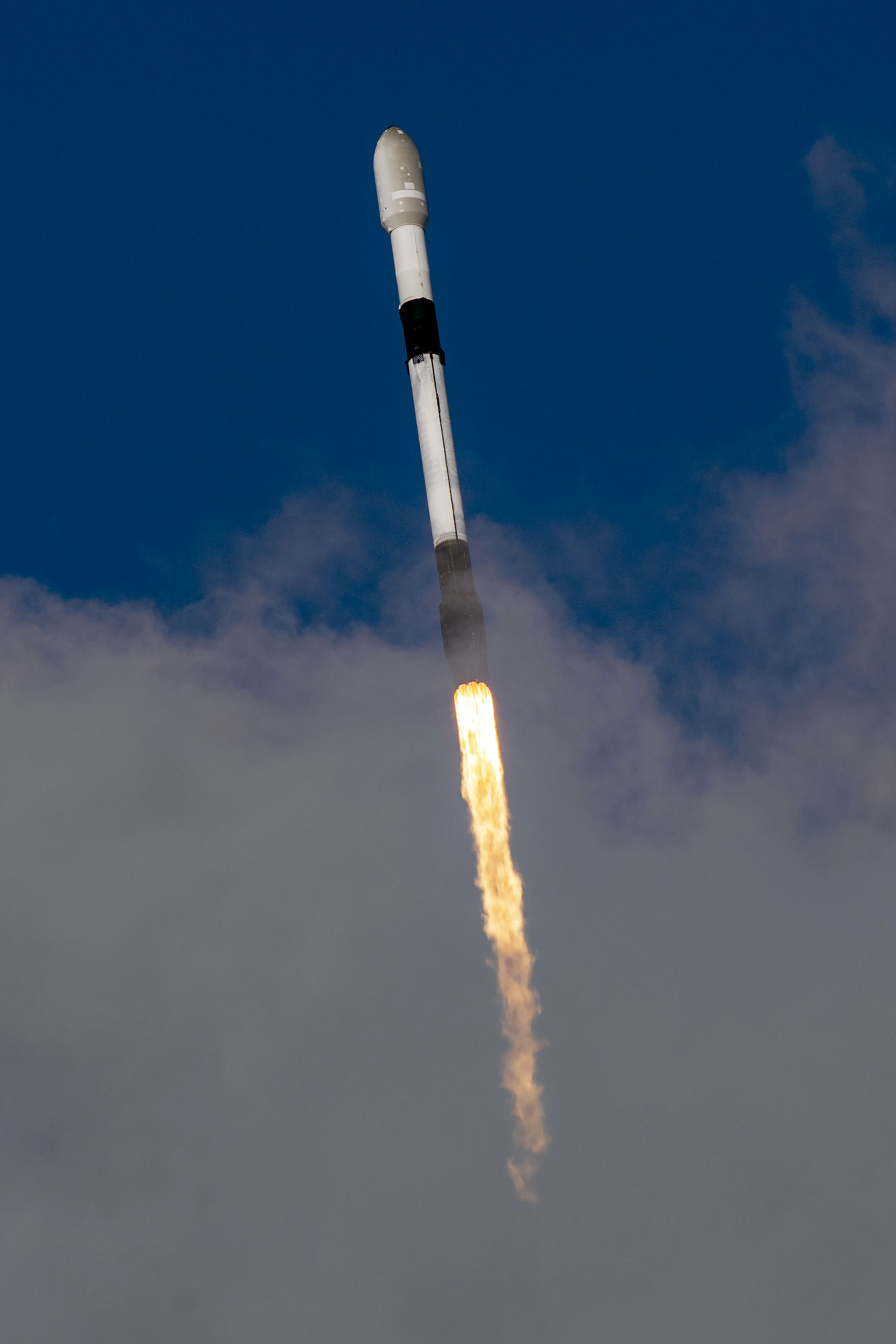
Falcon 9 Booster
The booster supporting the SARah 2 & 3 mission was B1075-8; as the name implies, the booster had supported seven previous missions. Following its landing, its designation changed to B1075-9.
| B1075’s Previous Missions | Launch Date (UTC) | Turnaround Time (Days) |
|---|---|---|
| Starlink Group 2-4 | January 19, 2023, 15:43 | N/A |
| Transport & Tracking Layers 0-1 | April 2, 2023 14:29 | 72.95 |
| Starlink Group 2-9 | May 10, 2023 20:09 | 38.24 |
| Starlink Group 5-7 | June 2, 2023 07:19 | 42.47 |
| Starlink Group 6-20 | August 8, 2023 03:57 | 46.86 |
| Starlink Group 7-3 | September 25, 2023 08:48 | 48.20 |
| Starlink Group 7-6 | October 29, 09:00 | 34.01 |
Following stage separation, the Falcon 9 conducted three burns. These burns aimed at softly touching down the booster on SpaceX’s landing zone LZ-4.
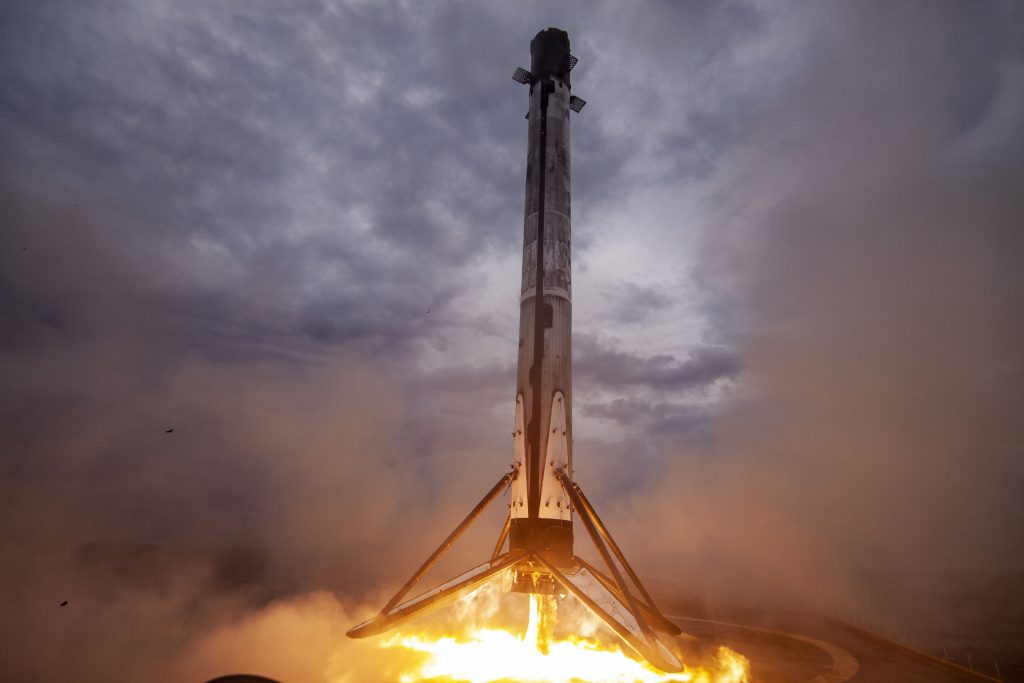
Falcon 9 Fairings
The Falcon 9’s fairing consists of two dissimilar reusable halves. The first half (the half that faces away from the transport erector) is called the active half, and houses the pneumatics for the separation system. The other fairing half is called the passive half. As the name implies, this half plays a purely passive role in the fairing separation process, as it relies on the pneumatics from the active half.
Both fairing halves are equipped with cold gas thrusters and a parafoil which are used to softly touch down the fairing half in the ocean. SpaceX used to attempt to catch the fairing halves, however, at the end of 2020 this program was canceled due to safety risks and a low success rate. On SARah 2 & 3, SpaceX attempts to recover the fairing halves from the water with their recovery vessel GO Beyond.
In 2021, SpaceX started flying a new version of the Falcon 9 fairing. The new “upgraded” version has vents only at the top of each fairing half, by the gap between the halves, whereas the old version had vents placed spread equidistantly around the base of the fairing. Moving the vents decreases the chance of water getting into the fairing, making the chance of a successful scoop significantly higher.
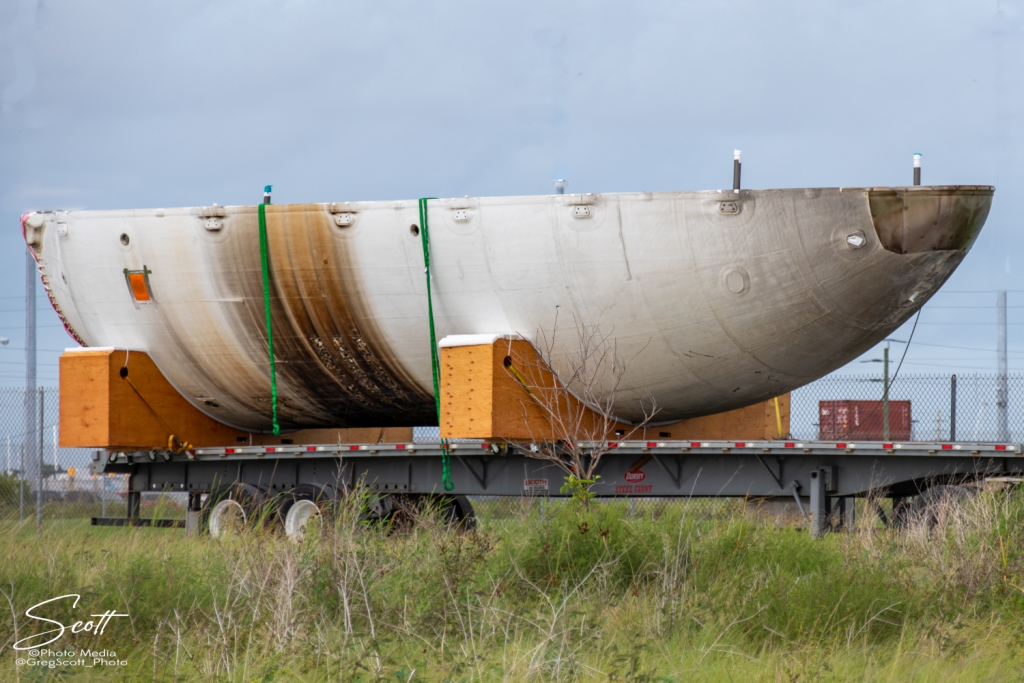

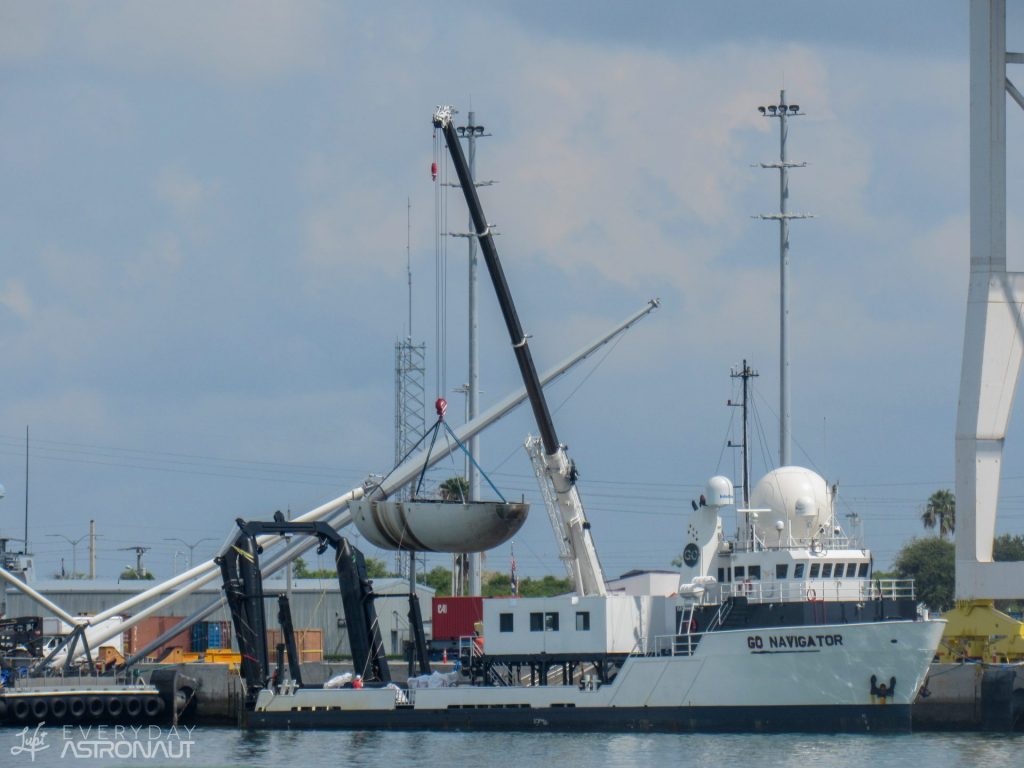
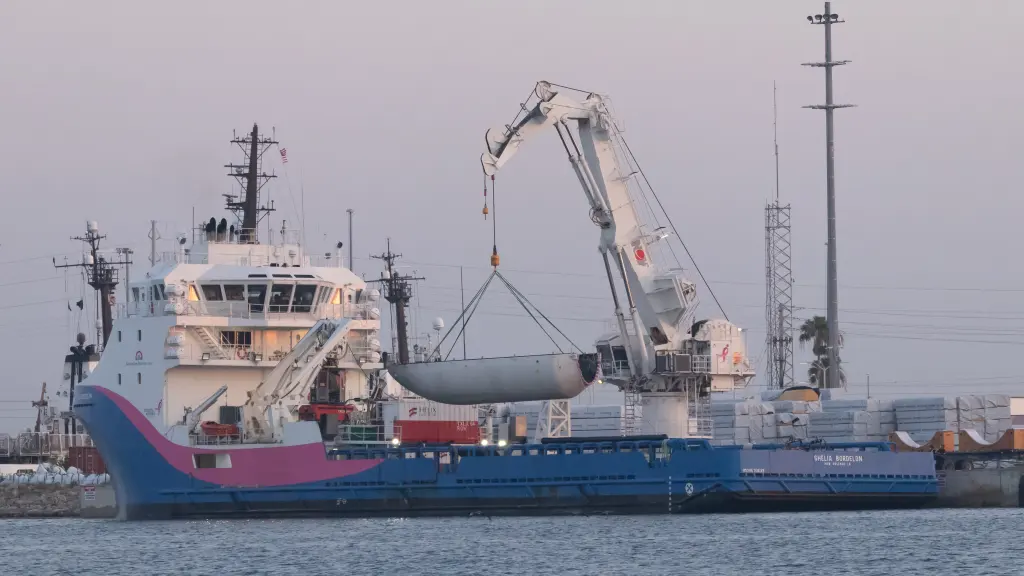
SARah 2 & 3´s Countdown
All times are approximate
| HR/MIN/SEC | EVENT |
|---|---|
| 00:38:00 | SpaceX Launch Director verifies go for propellant load |
| 00:35:00 | RP-1 (rocket grade kerosene) loading begins |
| 00:35:00 | 1st stage LOX (liquid oxygen) loading begins |
| 00:16:00 | 2nd stage LOX loading begins |
| 00:07:00 | Falcon 9 begins engine chill prior to launch |
| 00:01:00 | Command flight computer to begin final prelaunch checks |
| 00:01:00 | Propellant tank pressurization to flight pressure begins |
| 00:00:45 | SpaceX Launch Director verifies go for launch |
| 00:00:03 | Engine controller commands engine ignition sequence to start |
| 00:00:00 | Falcon 9 liftoff |
SARah 2 & 3´s Launch, Landing, And Deployment
All Times Approximate
| HR/MIN/SEC | EVENT |
|---|---|
| 00:01:12 | Max Q (moment of peak mechanical stress on the rocket) |
| 00:02:15 | 1st stage main engine cutoff (MECO) |
| 00:02:19 | 1st and 2nd stages separate |
| 00:02:27 | 2nd stage engine starts |
| 00:02:32 | 1st stage boostback burn begins |
| 00:02:38 | Fairing deployment |
| 00:03:16 | 1st stage boostback burn ends |
| 00:06:19 | 1st stage entry burn start |
| 00:06:33 | 1st stage entry burn ends |
| 00:07:24 | 1st stage landing burn start |
| 00:07:52 | 1st stage landing |
| 00:10:05 | 2nd stage engine cutoff (SECO-1) |
| 00:20:06 | Deployment of SRH2 |
| 00:25:06 | Deployment of SRH3 |


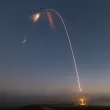
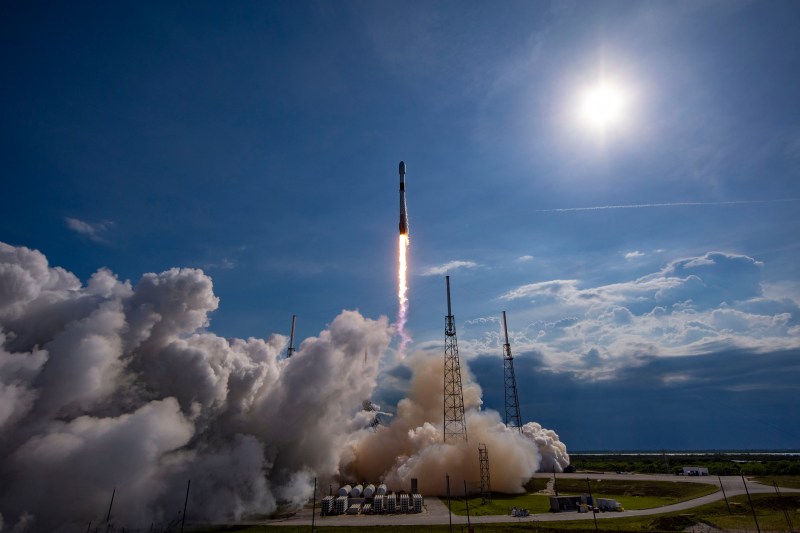

Some impressions from the launch: https://x.com/iamevitawagner/status/1739475288227209499?s=46